35 Lively Korean Banchan Varieties to Brighten Your Meal
Korean banchan, those delightful side dishes, represent a culinary art form deeply rooted in cultural traditions and family connections.
Small plates bursting with flavor characterize these vibrant accompaniments that transform every meal into a sensory experience.
Intricate preparation techniques and carefully selected ingredients define these miniature gastronomic masterpieces.
Each banchan carries a unique story, reflecting regional variations and generational cooking wisdom passed through families.
Textures range from crisp and pickled to soft and savory, ensuring a harmonious balance on the dining table.
These compact dishes showcase remarkable creativity, blending complex seasonings with meticulous presentation.
Banchan elevate simple meals into extraordinary culinary journeys, inviting diners to savor nuanced flavors and cultural heritage.
Here are 35 signature banchan varieties that will tantalize your taste buds:
Signature Banchan Varieties for Your Korean Table
No Korean meal is complete without a spread of banchan, small side dishes that bring balance and color. Pickled, spicy, or sweet, these plates add excitement to every bite.
Jeon
Jeon are popular Korean pancakes bursting with flavor and versatility, featuring a crispy exterior and tender interior made by coating ingredients in flour and eggs before pan-frying.
Savory versions dominate Korean cuisine, incorporating thinly sliced meats, seafood, and vegetables that transform simple ingredients into a delicious meal.
Koreans traditionally serve jeon during lunar new year and harvest festivals, though these pancakes appear regularly in daily dining.
Wheat flour creates the base for these adaptable dishes, which can include proteins like beef, shrimp, or squid alongside vegetables such as green onions or zucchini.
Each region in Korea offers unique jeon variations, reflecting local ingredient availability and culinary preferences.
Restaurants and home kitchens alike prepare these pancakes as appetizers, side dishes, or satisfying snacks.
Sweet versions exist alongside savory options, expanding jeon's culinary range.
Cooking methods typically involve pan-frying ingredients until golden brown and crisp, ensuring maximum flavor and texture.
Gamjajeon
Gamjajeon are crispy Korean potato pancakes made from grated or pureed potatoes that capture Korea's simple yet delicious street food culture.
Compact and golden-brown, these small round pancakes transform humble potatoes into a satisfying meal or snack.
Ingredients like scallions, chives, carrots, and onions often enhance their flavor and texture.
Pan-frying creates a perfectly crisp exterior while maintaining a soft interior.
Regional variations showcase different ingredient combinations and preparation techniques.
Traditional accompaniments include choganjang sauce, a blend of soy sauce, vinegar, sugar, and water.
Some versions feature spicier dips with gochujang chili paste or sprinkled chili flakes.
Restaurants and home cooks across South Korea enjoy these versatile pancakes as appetizers, side dishes, or light main courses.
Kimchijeon
Kimchijeon are crispy, tangy Korean pancakes bursting with fermented kimchi flavor and a satisfying golden-brown crunch.
Korean home kitchens transform simple ingredients like flour, eggs, and ripe kimchi into a savory sensation that balances spicy and umami notes.
Gochujang chili paste often enhances the pancake's complexity, while ground meat or additional vegetables provide extra texture and depth.
Traditional preparation involves mixing chopped kimchi into a light batter and pan-frying until edges turn golden and crisp.
Small sesame seed sprinkles add nutty undertones and visual appeal to the final dish.
Koreans enjoy kimchijeon as a versatile snack, appetizer, or light meal across different dining occasions.
Dipping sauces like soy or vinegar-based options complement the pancake's rich flavors.
Street vendors and home cooks alike celebrate this simple yet delicious Korean staple that showcases kimchi's culinary versatility.
Ssamjang
Ssamjang is a fiery Korean dipping sauce bursting with complex flavor profiles that blend traditional fermented pastes into a bold condiment.
Gochujang and doenjang form the sauce's spicy foundation, creating an intense umami base that elevates Korean barbecue dishes.
Sesame oil adds rich depth while scallions and garlic introduce sharp, aromatic notes to the mixture.
Brown sugar or honey softens the sauce's intense heat with a subtle sweetness.
Korean diners typically use ssamjang as a companion to grilled meats like bulgogi and galbi.
Sesame seeds frequently garnish the sauce, providing a subtle nutty crunch.
Restaurant and home versions share similar preparation methods, making ssamjang a versatile and beloved Korean culinary staple.
Namul
Namul are Korean vegetable side dishes that showcase fresh, minimally processed ingredients through simple seasoning techniques.
Green leafy vegetables, sprouts, roots, and occasional fruits transform into flavorful accompaniments prepared using diverse cooking methods like raw, pickled, sautéed, or blanched.
Sesame oil, soy sauce, garlic, and sometimes spicy gochujang provide light, nuanced seasoning that enhances each ingredient's natural flavor.
Traditional Korean meals always include several namul varieties served alongside main dishes.
Sesame seeds frequently garnish these colorful vegetable preparations.
Each namul dish maintains a delicate balance between texture and taste.
Regional variations highlight local vegetable availability and seasonal produce.
Nutritional value remains central to these versatile vegetable side dishes.
Pajeon
Pajeon are savory Korean pancakes bursting with green onions, a signature street food beloved across South Korea for its crispy texture and simple yet flavorful profile.
Rice flour and eggs form the base of these versatile pancakes, which showcase green onions as the star ingredient that gives the dish its name.
Seafood, kimchi, or additional vegetables often enhance the basic recipe, creating endless flavor combinations.
Koreans typically enjoy pajeon as a casual snack or appetizer, serving them with a tangy dipping sauce made from soy sauce and vinegar.
Small individual pancakes or one large pancake cut into portions are both common preparation styles.
Green onions visibly protrude from the pancake's surface, making pajeon instantly recognizable.
Street vendors and home cooks alike prepare this dish with quick, skillful techniques.
Crispy edges and soft centers make pajeon a satisfying and popular Korean comfort food.
Geotjeori
Geotjeori is a quick Korean side dish featuring unfermented fresh kimchi that bursts with immediate zesty flavors and crisp textures.
Napa cabbage forms its traditional base, creating a light alternative to standard fermented kimchi.
Korean families prepare this vibrant dish with a spicy seasoning blend of chili flakes, soy sauce, garlic, and ginger.
Fish sauce or anchovy sauce often enhances its complex taste profile.
Tender salted cabbage leaves absorb the aromatic paste quickly, developing an intense flavor within minutes.
Sesame seeds sprinkled on top add a nutty crunch to the dish.
Geotjeori pairs excellently with hearty soups and stews, providing a refreshing contrast.
Gim Gui
Gim gui transforms roasted seaweed into a crispy, salty Korean delicacy packed with nutritional benefits.
Korean households traditionally prepare this snack by carefully roasting seaweed sheets over direct heat until they become perfectly crunchy.
Fiber, vitamins, and minerals densely populate these thin, dark sheets that deliver intense oceanic flavors.
Seaweed enthusiasts often enjoy gim gui alongside a cold beer, creating a satisfying flavor combination that complements its sharp saltiness.
Grocery stores now stock packaged versions of this traditional snack, making it easily accessible for home consumption.
Modern Korean families frequently serve gim gui as a quick side dish or nutritious snack paired with steamed white rice.
Generations of Koreans have cherished gim gui as a staple part of their culinary tradition.
Stir-Fried Octopus (Nakji Bokkeum)
Nakji bokkeum are spicy Korean stir-fried octopus plates bursting with intense flavor and quick-cooked marine protein that combines tender seafood with fiery gochujang chili paste.
Korean home kitchens and street food vendors masterfully slice small octopuses into bite-sized pieces before flash-frying them with aromatic garlic and ginger.
Sliced vegetables like onions, scallions, and chili peppers add complexity and crunch to the dish.
Roasted sesame seeds provide a nutty garnish that complements the octopus's rich texture.
Fresh ingredients ensure maximum taste and tenderness in each mouthful.
Restaurant menus across South Korea feature this popular banchan as a zesty accompaniment to soups and rice dishes.
Traditional preparation methods highlight the octopus's natural sweetness while balancing heat from spicy seasonings.
Regional variations introduce unique ingredients that reflect local culinary preferences.
Sigeumchi Namul
Sigeumchi namul is a vibrant Korean side dish featuring blanched spinach seasoned with bold, aromatic ingredients.
South Korean cuisine embraces this simple yet flavorful preparation that transforms fresh spinach into a zesty accompaniment.
Chefs quickly blanch spinach leaves until tender and bright green, then drain them completely.
Roasted sesame seeds, minced garlic, soy sauce, and sesame oil create a rich, nutty flavor profile that complements the spinach's natural earthiness.
Scallions add a sharp, fresh note to the dish.
Red pepper flakes can provide an optional spicy kick for those who enjoy extra heat.
Koreans typically serve sigeumchi namul alongside steamed rice or as part of a larger banchan spread.
Sesame seeds sprinkled on top add a final crunchy texture to this classic side dish.
Haemuljeon
Haemuljeon are savory Korean seafood pancakes packed with marine ingredients like mussels, oysters, squid, shrimp, and clams.
South Korean home kitchens craft these crispy pan-fried delicacies by mixing chopped seafood with scallions, eggs, and flour.
Cooks carefully blend the ingredients into a smooth batter before frying to golden perfection.
Salt and pepper enhance the seafood's natural flavors.
Each pancake offers a satisfying crunch with tender seafood bits throughout.
Diners often enjoy haemuljeon with soy sauce or spicy dipping sauces.
Family gatherings and casual meals frequently feature these quick, protein-rich pancakes.
Musaengchae
Musaengchae are crisp Korean radish salad strips bursting with zesty flavor and popular in Korean cuisine.
South Korean home kitchens frequently prepare this light side dish using fresh Korean radish cut into thin matchsticks.
Vinegar provides sharp tangy notes while red pepper flakes add moderate heat to the recipe.
Salt helps draw out radish moisture and intensify its natural crunch.
Minced garlic contributes sharp aromatic undertones to the salad.
Sugar balances the dish's spicy and acidic elements.
Scallions offer a fresh green accent to the mix.
Korean families typically serve musaengchae as a refreshing banchan alongside main dishes.
Hobakjeon
Hobakjeon are savory Korean zucchini pancakes beloved for their crispy exterior and delicate texture.
Korean home cooks prepare these golden-brown discs by salting zucchini slices to draw out moisture before coating them in flour and eggs.
Thin zucchini rounds get a light dusting of flour that helps create a delicate crisp when fried.
Beaten eggs provide a rich binding that helps the pancakes hold together perfectly during cooking.
Salt enhances the vegetable's natural flavor while creating a balanced seasoning.
Oil heated to medium-low temperature ensures even cooking without burning the edges.
Each pancake requires careful flipping to achieve uniform golden-brown coloration.
Served as a side dish or appetizer, hobakjeon represents a simple yet elegant component of traditional Korean cuisine.
Kongnamul Muchim
Kongnamul muchim are Korean seasoned soybean sprouts bursting with fresh, crisp textures and bold seasonings that quickly complement main dishes across Korean restaurants and home kitchens.
Korean cooks carefully rinse and briefly blanch the sprouts to maintain their signature crunch and prevent mushiness.
Sesame oil provides a nutty base flavor that enhances the natural earthiness of the bean sprouts.
Soy sauce adds umami depth while red chili flakes introduce a subtle heat and vibrant color.
Scallions contribute a sharp, green freshness to the overall seasoning profile.
Toasted sesame seeds offer a final aromatic crunch that elevates the simple side dish.
These sprouts serve as a classic banchan (side dish) in Korean meals.
Salt and pepper help balance the complex seasoning blend.
Ojingeo Chae Bokkeum
Ojingeo bokkeum is a fiery Korean street food featuring tender squid strips quickly stir-fried with gochujang chili paste and aromatic seasonings.
Street vendors and home cooks create this spicy delicacy by caramelizing squid with intense red pepper sauce and complementary ingredients like garlic and soy sauce.
Bars and restaurants frequently serve this snack alongside cold beer, making it a popular drinking companion.
Korean diners enjoy ojingeo bokkeum as a standalone appetizer or paired with steamed rice.
Gochujang provides a deep, complex heat that transforms simple squid into an addictive dish.
Restaurant patrons appreciate its quick preparation and bold flavor profile.
Small pieces of squid absorb the spicy sauce, creating a mouth-watering texture and intense taste.
Maritime regions of Korea especially treasure this quick, protein-rich street food.
Wanjajeon
Korean meatballs pack rich umami flavors from ground meat blended with silky tofu, creating a uniquely tender protein dish popular across South Korea.
Minced beef or pork serves as the primary protein, often mixed with both meat types for complex taste profiles.
Traditional recipes incorporate finely chopped onions, garlic, carrots, and scallions to enhance texture and depth.
Seasonings like soy sauce, sesame oil, and black pepper add distinctive Korean culinary nuances.
Versatile serving options include appetizers, main course accompaniments, or street food snacks.
Korean restaurants and home kitchens typically pan-fry or grill these meatballs until golden brown and slightly crispy.
Families enjoy these meatballs with steamed rice, dipping sauces, or as part of larger Korean meal spreads.
Bindaetteok
Bindaetteok, a crispy Korean mung bean pancake originating in the 1670s, began as a luxurious dish enjoyed by wealthy citizens with pork toppings.
Korean street markets and home kitchens now feature this versatile pancake made from ground mung beans and diverse ingredients like kimchi, sprouts, onions, and ground pork.
Shallow-fried until golden brown, bindaetteok delivers a satisfying crunch with soft, flavorful interior.
Traditional preparation involves grinding mung beans into a smooth batter before mixing in additional components.
Korean culinary experts recommend serving the pancake immediately after cooking to maintain its signature crispy texture.
Street vendors and home cooks across South Korea frequently prepare this popular savory dish as a quick, filling meal.
Regional variations add unique twists to the basic recipe, reflecting local ingredient preferences.
Bindaetteok represents a humble yet delicious example of Korean street food culture.
Sukjunamul
Sukjunamul are Korean bean sprout side dishes bursting with simple, fresh flavors and nutritional benefits.
Mung bean sprouts form the core ingredient of this classic banchan, carefully rinsed and blanched to achieve a tender yet crisp texture.
South Korean home kitchens traditionally prepare sukjunamul by draining blanched sprouts and mixing them with aromatic seasonings like minced garlic and scallions.
Sesame oil adds rich depth and nutty undertones to the dish, while roasted sesame seeds provide a delicate crunch and visual appeal.
Salt and pepper enhance the sprouts' natural mild taste, creating a balanced and refreshing accompaniment.
Koreans serve sukjunamul as a complementary side dish alongside rice and other main courses.
Quick and easy to prepare, this light banchan delivers essential nutrients and a clean, bright flavor profile.
Versatile and healthy, sukjunamul represents a staple in Korean everyday cuisine.
Saengchae
Saengchae is a zesty Korean salad bursting with fresh vegetables and bold spicy flavors.
Korean kitchens prepare this vibrant side dish using thinly sliced daikon radish, cucumber, or other crisp vegetables dressed with a fiery mixture of gochugaru chili flakes or gochujang chili paste.
Salt, garlic, vinegar, and fish sauce add depth to the tangy dressing that coats the vegetables.
Spice levels vary depending on personal preference and regional traditions.
Meat or seafood sometimes join the salad for extra protein and complexity.
Restaurants and home cooks serve saengchae as a refreshing banchan (side dish) alongside main courses.
Small portions complement larger meals with their sharp, invigorating taste.
Home kitchens easily customize this simple yet exciting salad to suit individual palates.
Kongjaban
Kongjaban are sweet-savory Korean side dishes crafted from tender black soybeans simmered in a rich soy sauce and sugar mixture.
Traditionally prepared in Korean households, these beans transform into a glossy, slightly crunchy accompaniment with balanced flavor complexity.
Maple syrup or honey frequently enhance the natural sweetness of the dish.
Children often enjoy kongjaban in school lunch boxes or alongside steamed rice.
South Korean families commonly serve these beans as a complementary banchan (side dish) during meals.
Boiling and seasoning techniques require careful attention to maintain the perfect bean texture.
Nutritious black soybeans provide protein and essential minerals to the overall meal.
Guljeon
Guljeon is a crispy Korean seafood delicacy featuring fresh oysters coated in a savory egg batter and pan-fried to golden perfection.
Originating from South Korea's coastal regions, this traditional dish combines briny oysters with a light, seasoned flour coating.
Skilled cooks carefully shell and rinse oysters before dusting them with flour.
Rice wine adds depth to the egg mixture, which includes salt, pepper, and chopped scallions.
Each oyster gets dipped in the fragrant batter and quickly fried until crisp and golden brown.
Restaurants and home kitchens serve guljeon as a popular appetizer or side dish.
Regional variations may include different spices or additional ingredients.
Families and friends often enjoy guljeon during seafood-focused gatherings and celebrations.
Hobak Namul
Hobak namul are Korean zucchini side dishes featuring tender Korean squash sautéed with aromatic seasonings.
Korean cooks prefer aehobak for its delicate texture and thin skin compared to regular zucchini.
Sliced zucchini disks get quickly stir-fried with scallions, garlic, and red pepper flakes for a spicy kick.
Sesame oil, soy sauce, sugar, and salt create a balanced flavor profile that enhances the vegetable's natural sweetness.
Home kitchens and restaurants across South Korea serve this simple yet flavorful banchan as a complementary dish.
Salt helps draw out moisture during cooking, ensuring crisp vegetable pieces.
Chilled or at room temperature, hobak namul offers a refreshing accompaniment to main courses.
Hwajeon
Hwajeon are delicate South Korean rice pancakes adorned with edible flower petals that transform simple ingredients into an elegant springtime delicacy.
Korean women historically crafted these small pancakes during seasonal flower festivals as a celebration of nature's beauty.
Soft rice flour dough serves as the base for these intricate treats, carefully shaped and pan-fried to create a light, tender texture.
Traditional flowers like azaleas, pear blossoms, rose petals, and wild chrysanthemums decorate the surface, adding vibrant colors and subtle flavors.
Originating during the Koryo Dynasty, hwajeon emerged from a picnic tradition called Hwajeon Nori, where women would gather to enjoy these artistic seasonal treats.
Sweet rice syrup often glaze the pancakes, enhancing their delicate flavor profile.
Rice flour, water, and a pinch of salt compose the simple yet sophisticated batter.
Gaji Namul
Gaji namul are steamed Korean eggplant slices seasoned with a bold mixture of garlic, scallions, and spices that deliver a complex umami flavor profile characteristic of traditional Korean banchan side dishes.
South Korean home kitchens frequently prepare this simple vegetable side by quartering eggplants and steaming them until tender.
Sesame oil provides a nutty base note that enhances the vegetable's natural earthiness.
Soy sauce adds depth and saltiness to the preparation.
Red pepper flakes introduce a mild heat that complements the eggplant's soft texture.
Scallions contribute a fresh, sharp element to balance the dish's rich undertones.
Sesame seeds sprinkled on top create a subtle crunch and visual appeal.
Served cold or at room temperature, gaji namul works perfectly alongside grilled meats or rice dishes.
Radish Pancake (Mujeon)
Mujeon are savory Korean radish fritters featuring thin, golden-brown slices of radish dipped in a light flour batter and carefully pan-fried to crispy perfection.
South Korean home kitchens have long prepared this traditional side dish using fresh radishes sliced precisely and seasoned with salt.
Vegetable stock adds depth to the batter, creating a delicate coating that transforms simple radish into a crisp, flavorful treat.
Skilled cooks carefully halve each radish slice before dipping and frying to ensure even cooking and maximum crunchiness.
Hot oil in a skillet helps achieve the signature golden-brown exterior that makes these fritters irresistible.
Regional variations may include subtle seasoning adjustments or different radish types.
Korea's rich culinary tradition shines through this simple yet elegant preparation of fresh, local ingredients.
Saewoojeon
Saewoojeon are savory Korean shrimp pancakes bursting with ocean-fresh flavor and delicate textures.
Korean home kitchens transform simple ingredients like shrimp, flour, eggs, salt, and white pepper into crispy golden delights.
Small shrimp get seasoned with salt and pepper before receiving a light flour coating and egg dip.
Skilled cooks carefully pan-fry these pancakes until edges turn golden brown and crisp.
Restaurants and families across South Korea prepare saewoojeon as a popular side dish or appetizer.
Regional variations might include additional spices or herbs for extra complexity.
Street vendors and home cooks alike share this beloved seafood pancake that represents Korea's rich culinary traditions.
Daegujeon
Daegujeon are savory Korean pan-fried cod fritters bursting with seafood flavor and delicate texture.
Korean home kitchens have perfected this simple yet elegant dish using fresh cod fillets as the primary ingredient.
Fishermen along South Korea's coastal regions traditionally prepare these crispy medallions with minimal seasonings that highlight the fish's natural taste.
Careful coating techniques involve dredging cod in flour, dipping in seasoned egg mixture, and frying until golden brown.
Scallions and garlic provide subtle aromatic undertones that complement the mild fish.
Salt and white pepper enhance the protein's inherent richness without overwhelming its delicate profile.
Restaurants across South Korea continue to feature this classic seafood preparation that connects generations through its authentic preparation method.
Kkaennip-Jeon
Korean perilla leaf beef rolls capture South Korea's dynamic street food culture with their crispy exterior and juicy meat interior.
Ground beef mixed with scallions, garlic, onions, sesame oil, and soy sauce creates a flavorful filling wrapped inside fragrant perilla leaves.
Cooks carefully coat these delicate parcels in flour and egg wash before pan-frying them to golden perfection.
Regional variations might include additional ingredients like tofu or finely chopped vegetables.
Perilla leaves contribute a unique herbal note that distinguishes these rolls from similar meat preparations.
Diners enjoy them as a satisfying and quickly prepared protein-rich dish with maximum flavor.
Gochujeon
Gochujeon represents spicy Korean pan-fried peppers bursting with intense flavor and simple ingredients.
Green chili peppers form the core of this traditional dish from South Korea.
Chopped peppers blend seamlessly with onions, flour, and fish sauce to create a crispy savory pancake.
Each piece develops a golden-brown exterior with a tender interior.
Fish sauce adds depth and umami to the pepper-based mixture.
Seasoned with minimal spices, gochujeon delivers a quick and satisfying Korean appetizer.
Served hot, these pepper pancakes complement rice and other side dishes.
Yukjeon
Yukjeon highlights South Korea's mastery of pan-fried meat dishes with its expertly prepared battered beef.
Korean cooks slice beef ultra-thin and marinate it in a rich soy-based sauce for deep flavor complexity.
Rice flour or egg batter coats the meat before careful pan-frying in hot oil.
Traditional preparation requires precise technique to achieve a crispy exterior while maintaining tender meat inside.
Korean families often serve yukjeon as a side dish during special gatherings and celebrations.
Restaurants across Seoul feature this classic protein-rich recipe that balances savory marinades with light, crispy textures.
Regional variations might include different meat cuts or subtle seasoning tweaks.
Served hot and garnished with green onions, yukjeon represents a delicious snapshot of Korean culinary tradition.
Saengseonjeon
Saengseonjeon are crispy Korean fish pancakes highlighting fresh white fish like pollock or sea bream delicately coated in flour and eggs.
Korean home cooks prepare these savory pan-fried patties by carefully seasoning fish fillets with salt before dredging them in flour.
Smooth egg batter creates a golden, tender exterior that seals in the fish's natural flavors.
Each pancake offers a delicate balance between crisp edges and soft inner texture.
Traditional preparation involves minimal seasoning to showcase fish quality.
Oil creates a light, even frying that transforms simple ingredients into an elegant dish.
South Korean kitchens often serve saengseonjeon as appetizers or side dishes during family meals.
These fish pancakes represent a classic example of Korean home cooking's simplicity and precision.
Dubujeon
Dubujeon are savory Korean tofu pancakes that blend silky, protein-rich tofu with crispy, golden-brown edges.
Originating in South Korea, these pan-fried delicacies combine simple ingredients like chopped tofu, scallions, onions, and carrots.
Eggs and flour bind the mixture, creating a light batter that transforms into a delicious side dish or appetizer.
Salt and pepper add subtle seasoning to enhance the tofu's mild flavor.
Each pancake offers a satisfying texture with a crisp exterior and soft interior.
Restaurants and home kitchens across Korea serve dubujeon as a popular comfort food.
Korean families often enjoy these pancakes during casual meals or gatherings.
Tuna Jeon (Chamchijeon)
Chamchijeon delivers a crispy Korean pan-fried tuna pancake that combines simple pantry ingredients into a quick, satisfying meal.
Canned tuna forms the protein-rich base of this savory dish, mixed with finely chopped onions and garlic for added flavor.
Sesame oil adds a nutty undertone that enhances the pancake's overall taste.
Vegetable oil helps achieve a golden-brown exterior when frying the thin, crisp pancakes.
South Korean kitchens often serve chamchijeon as a casual side dish or light main course.
Small portions work perfectly as appetizers or snacks during family gatherings.
Versatile and easy to prepare, this tuna pancake offers a delicious way to transform everyday ingredients into a tasty Korean specialty.
Buseot Bokkeum
Buseot bokkeum showcases South Korean cuisine's mastery of mushroom stir-frying, transforming simple ingredients into a flavorful banchan side dish bursting with umami and aromatic depth.
Korean home cooks expertly sauté oyster, shiitake, or button mushrooms with minced garlic and sliced onions in a hot wok, creating a quick and savory accompaniment.
Each mushroom variety brings its unique texture and earthy flavor to the dish, making it versatile for different palates.
Traditional seasonings like soy sauce, sesame oil, and green onions enhance the mushrooms' natural richness.
Salt and pepper provide subtle seasoning that complements the mushrooms' robust profile.
Restaurants and home kitchens across South Korea prepare this dish as a quick, nutritious side that pairs perfectly with steamed rice.
Vegetarians and meat-eaters alike enjoy buseot bokkeum for its simplicity and intense flavor.
Gajijeon
Gajijeon is a crispy Korean pan-fried eggplant dish celebrated for its simple yet delicious preparation method.
South Korean home kitchens craft this classic side dish by slicing fresh eggplants and seasoning them with salt.
Battered with flour and dipped in whisked eggs, the eggplant slices transform into golden-brown crispy treats.
Each slice gets carefully coated to ensure a perfect crunch and even cooking.
Traditional preparation involves minimal ingredients like eggplants, flour, eggs, and oil.
Family gatherings and casual meals often feature this quick and easy vegetable side dish.
Gajijeon provides a savory complement to rice and main course proteins.
Regional variations might include subtle spice or herb additions to enhance the basic recipe.
What Regional Differences Influence Banchan Varieties Across Korea?
Banchan, the small side dishes served with Korean meals, vary widely across regions, shaped by local climate, geography, and cultural traditions:
These regional distinctions create a dynamic and rich variety of banchan that reflect Korea’s diverse landscapes and culinary heritage.
How Are Seasonal Ingredients Used Across Different Banchan Styles?
Seasonality plays a vital role in banchan preparation, ensuring freshness and optimal flavor:
Across all seasons, Korean cooks maximize ingredient freshness and adapt banchan styles - whether fresh, pickled, or fermented - to highlight the best of each period’s offerings.

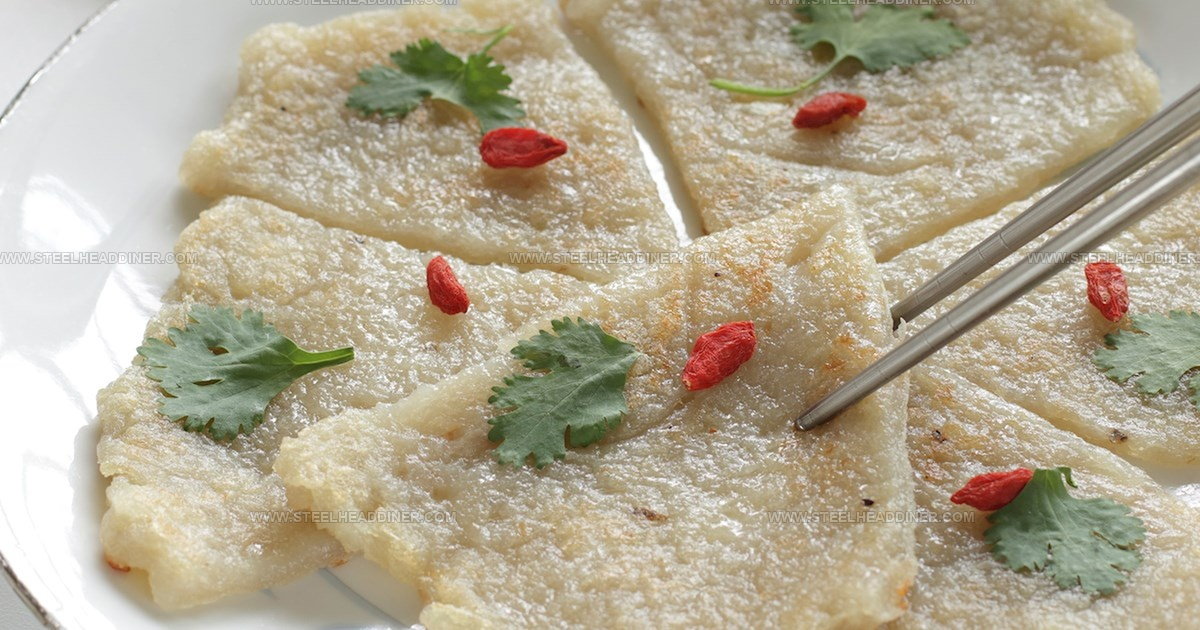
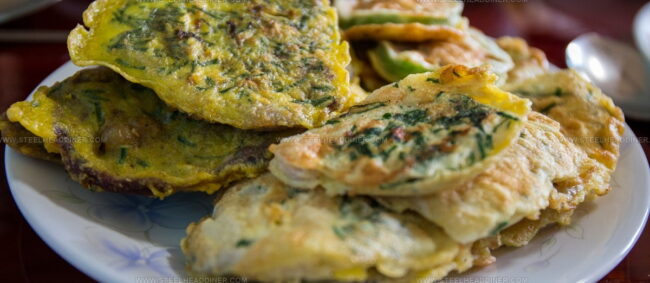

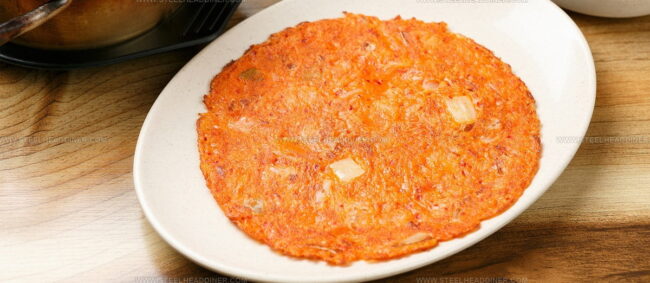
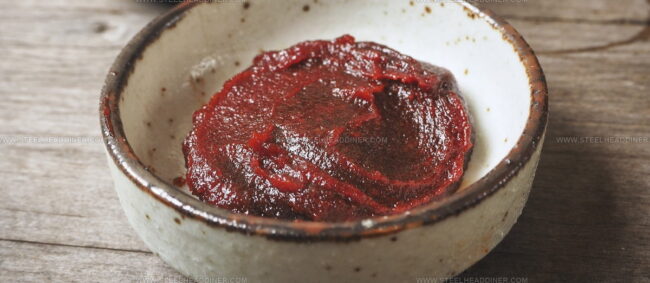
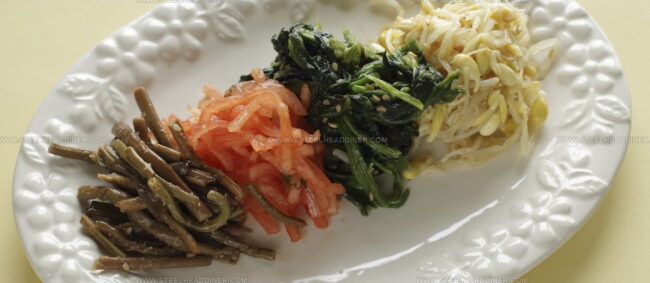
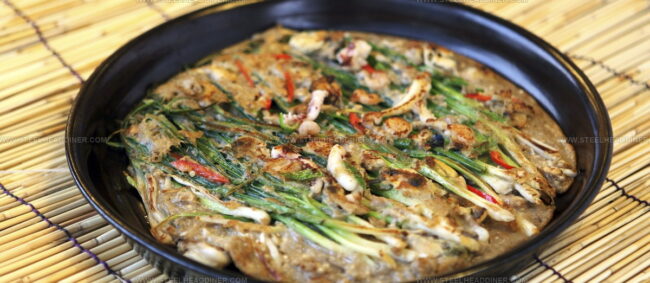

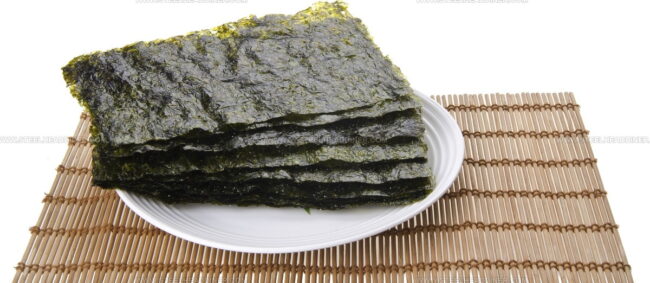
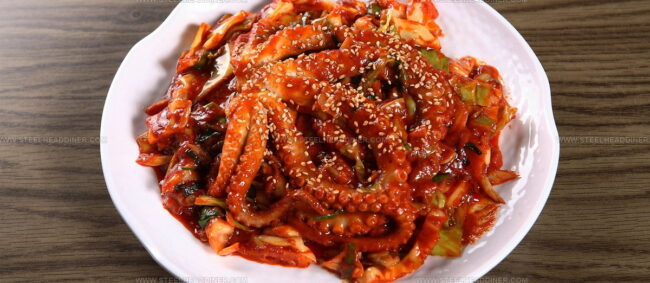

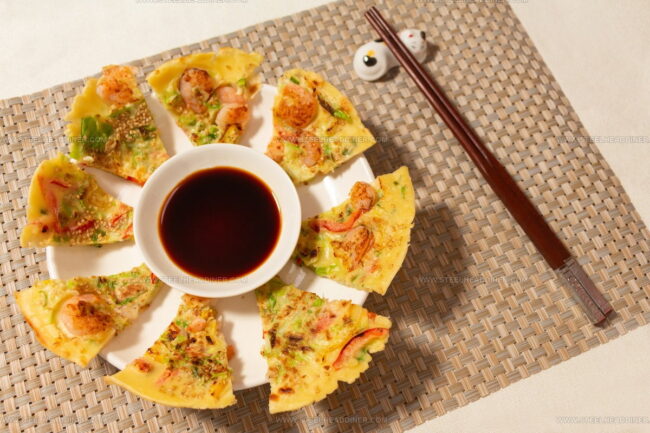

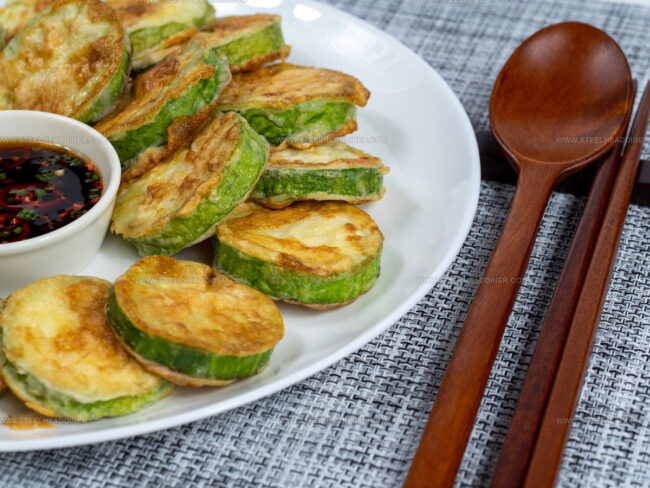
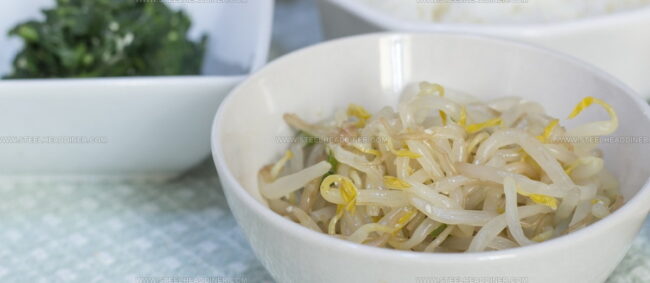
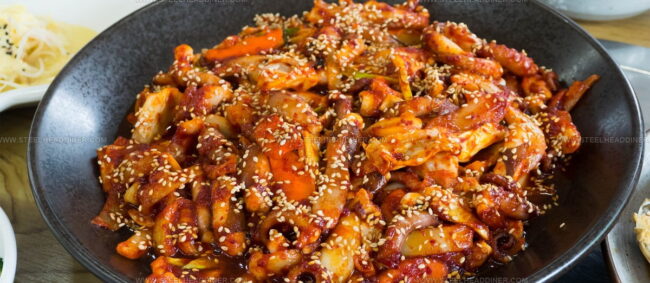

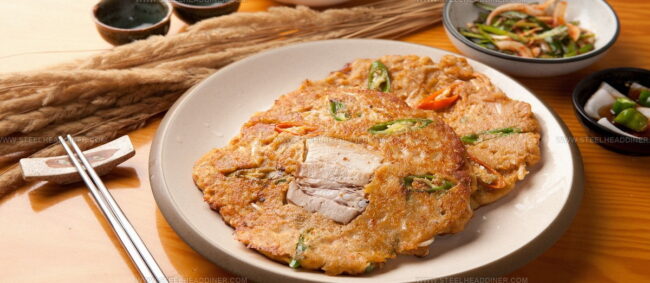
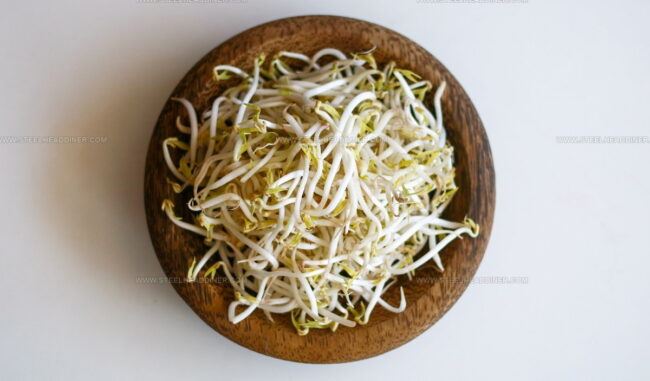

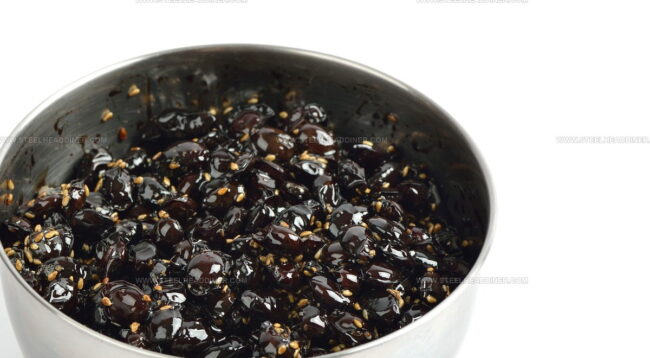
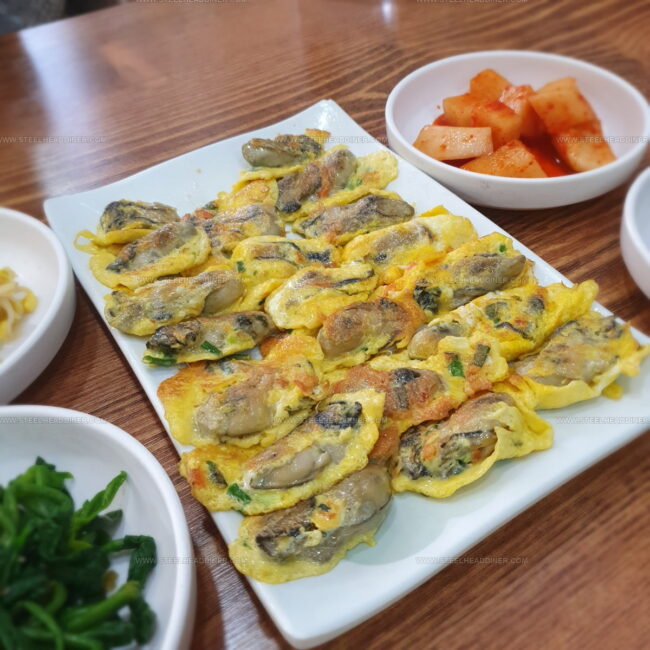
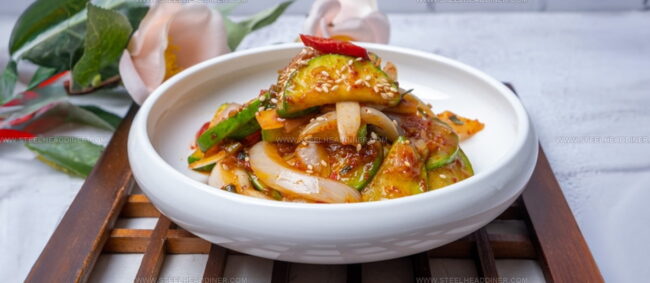
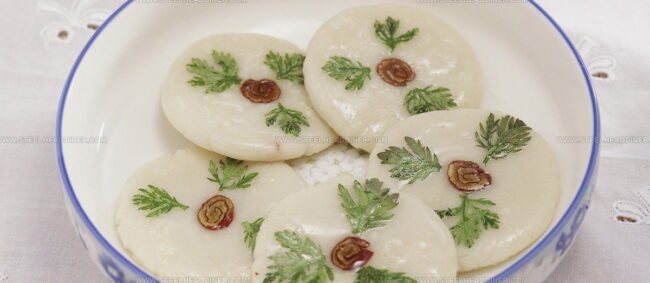
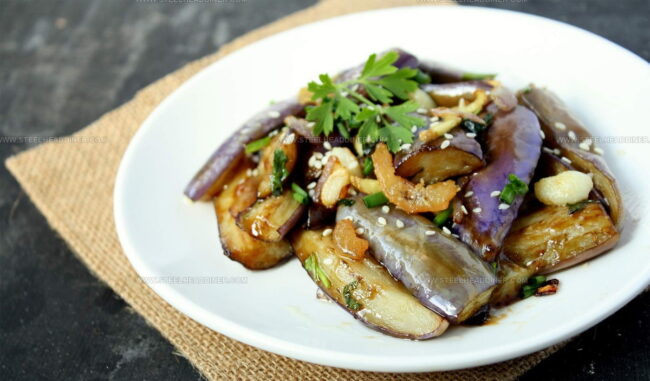
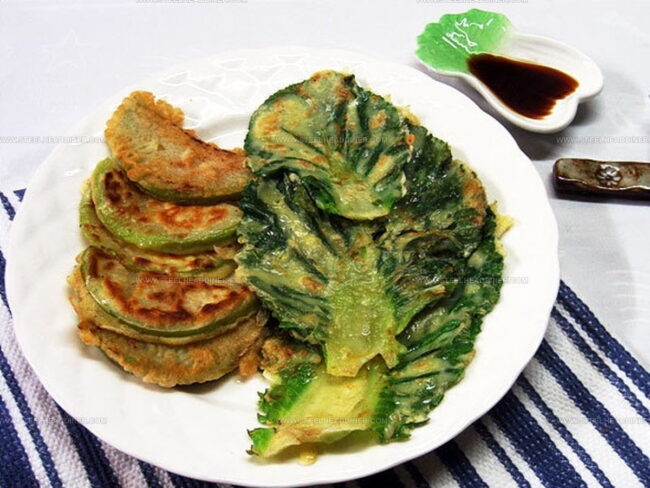
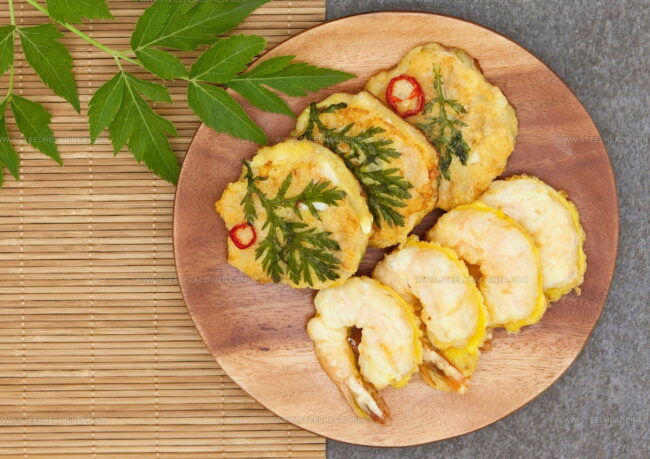

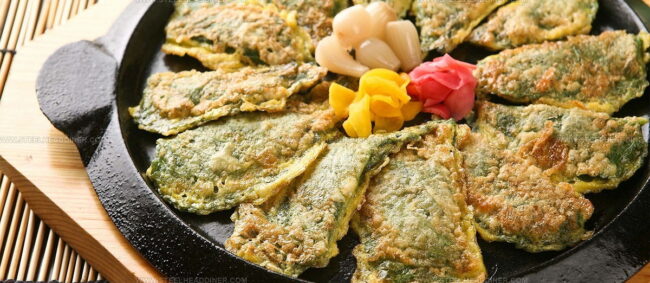
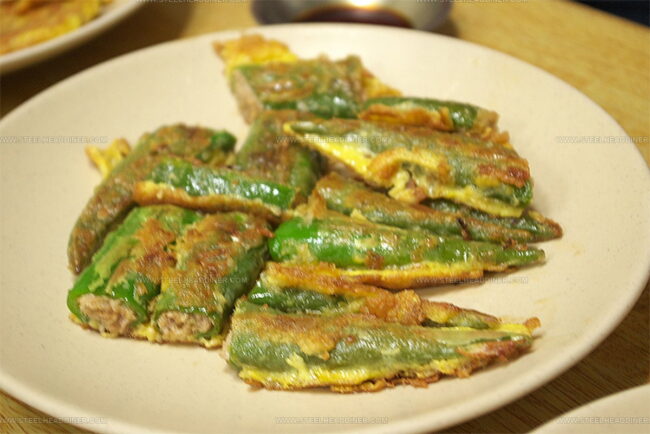
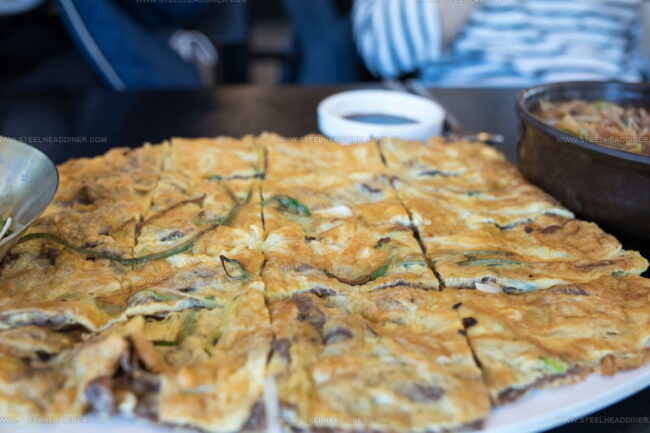
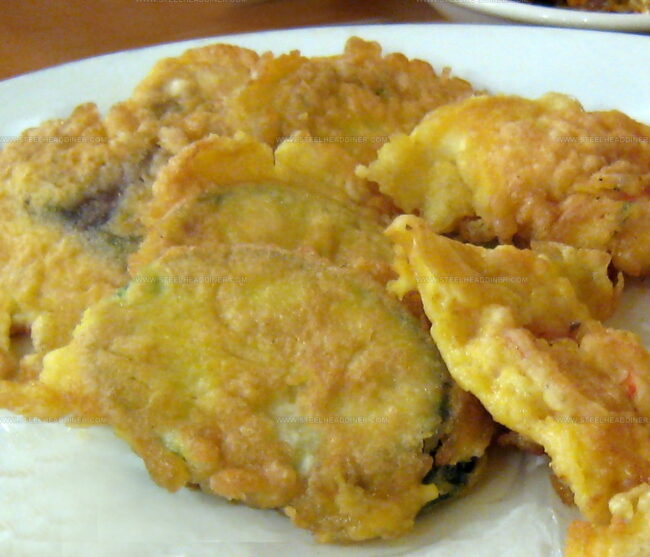

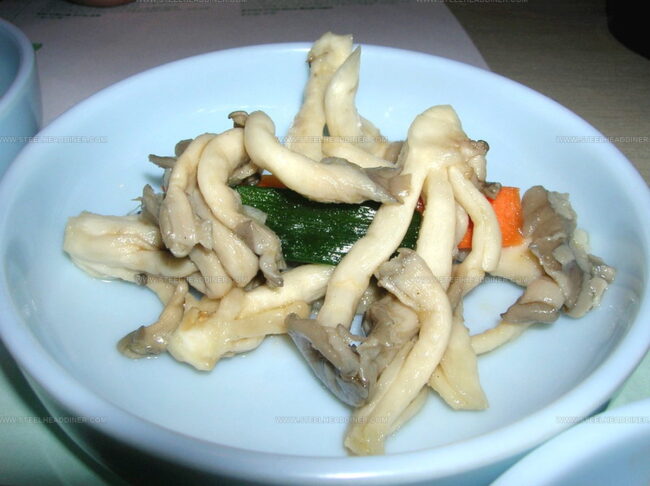
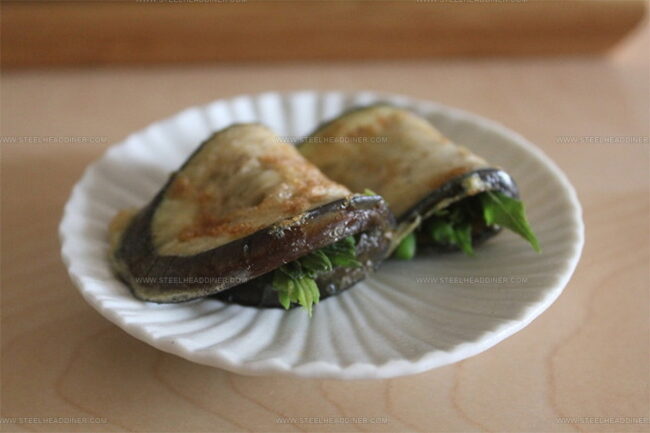

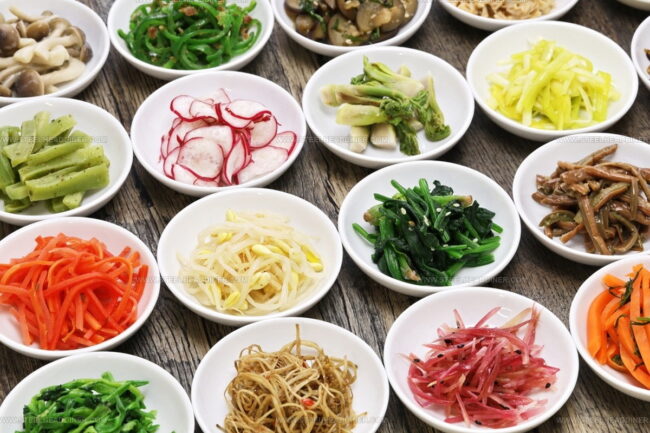
Jack Monroe
Founder & Recipe Innovator
Expertise
Pacific Northwest cuisine, Single-serving recipe development, Sustainable sourcing and cooking, Modern comfort food
Education
Brightwater
Associate of Applied Science in Culinary Arts
Focus: Sustainable cooking, seasonal ingredients, and food systems education
Jack grew up with a fishing rod in one hand and a cast-iron skillet in the other. After graduating from Brightwater: A Center for the Study of Food, he set out to prove that cooking for one could still taste like a feast.
Jack believes that food should feel real: fresh, fearless, and a little wild, just like the rivers he grew up around. For Jack, every single dish is a small adventure, and the best ones are the ones you can cook with heart, not hassle.